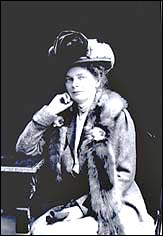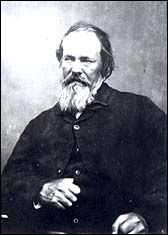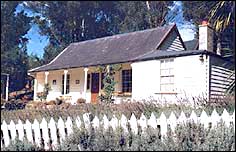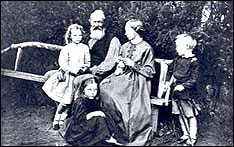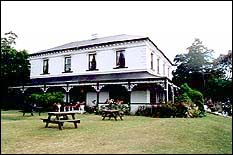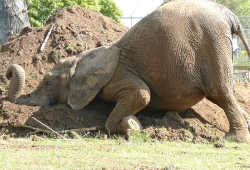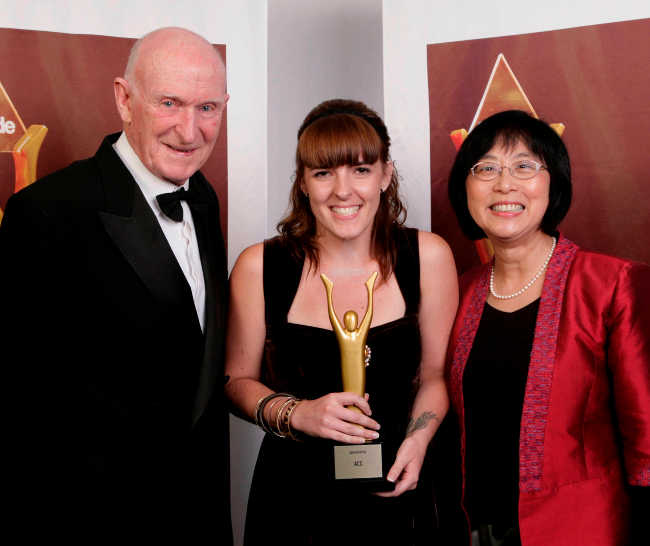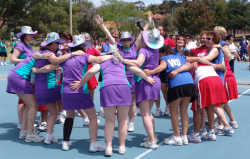Morag Lawrence – 11/05/01
Margaret Stoddart was for over half a century a leader of the Christchurch art community, and her name is well-known to many New Zealanders, especially Cantabrians.
|
|
| M O Stoddart, ca 1910 Photo Source H H Clifford Photograph Canterbury Museum |
Fewer people know the story of her father, Mark Stoddart whose life is interesting in itself and who was a strong influence in the development of his daughter’s artistic interests.
Mark Stoddart Mark Stoddart was descended from an old Scottish border family, the Stout-hearts or Stoddarts, and was born and educated in Edinburgh. He arrived in Lyttelton Harbour in January, 1851, while the first four ships of the Canterbury settlement were still at anchor.
After leaving Scotland to go to sea at the age of eighteen, Stoddart had many adventures in the East before buying Lamplough Station in the Glen Nona district of the Victorian Pyrenees, Australia. A book kept during these years, a Memorandum of the cost of Lamplough Station including all expenses connected therewith has been preserved by Mark Stoddart’s grand-daughter.
In 1850, after noting the effects of the Australian drought, Stoddart decided to sell out and join his friend E, M Templer who had already chartered a ship The Australasia and was ready with 2000 sheep to sail for New Zealand. Stoddart also took sheep on board the German-manned vessel.
|
|
| M P Stoddart Photo Source Canterbury Museum |
The McDonald Dictionary of Canterbury Biographies, Canterbury Museum library, states that their sheep were landed without loss, and that Stoddart made a shrewd observation in describing the scene at Lyttelton: "A picnic sensation softened the hard realities to people entirely new to the colonial life."
Stoddart was a naturalist and able to give a good account later of the bird life and flora in New Zealand before settlers and fire had done their work. Fishing and the importing of sporting fish such as salmon and trout were a great interest to him all his life.
Farming in Canterbury Stoddart first settled on the Terrace Station on the Rakaia River in Canterbury where the homestead sited below the top of the terrace was said to be one of the windiest places in Canterbury. Stoddart did not stay there long. He sold out to Sir John Hall in 1853. Negotiations to farm in a partnership on land in the area he named Glenmark did not work out successfully and he finally bought land and settled on Banks Peninsula in a bay on the Lyttelton Harbour first known as Stoddart’s Bay and later renamed by Stoddart as Diamond Harbour.
Marriage Stoddart became engaged to Anna Schjott, the daughter of a Norwegain clergyman. He imported their house from Australia in sections made of Australian hardwood, and later the walls were filled with cob made from local mud. The front of the roof was made of slate. Trees, mostly Australian gums, were planted to shelter it from the winds.
Mark and Anna were married in 1862 at Okains Bay, one of the eastern ocean-facing bays on Banks Peninsula, and spent their honeymoon in the cottage at Diamond Harbour.
|
|
| Cottage at Diamond Harbour today Photo source Maurice Agar |
|
|
| Mark Stoddart and family, Diamond Harbour, Canterbury, NZ, March 10, 1871 Photo Source A C Barker photograph Canterbury Museum |
The Stoddarts had a family of six children, four girls and two boys. In 1871 Dr A. C. Barker, the well-known early Canterbury photographer took a photograph in the Diamond Harbour Garden of Mark and Anna Stoddart with their three oldest children, Frances, Margaret and James.
Their second daughter, Margaret, born in 1865, became well known as a painter. She had inherited her father’s ability in observing and appreciating nature.
The family travelled to Britain on two occasions – the first in 1866 to explore Mark’s roots in Scotland and Anna’s in Norway, and the second in 1882 to improve Mark’s failing health. On the second trip Margaret was sent to The Merchant Maiden School where her studies included art lessons. On the family’s return to New Zealand she and her sisters were enrolled in 1882 at the new Canterbury College School of Art.
Some of the Stoddarts’ land at Diamond Harbour was sold to Harvey Hawkins, a Lyttelton ships’ chandler. He built a large house for his family on the land and the Stoddart family went on a trip to Britain. On their return they settled in Christchurch and lived in Fendalton Road in a house called Lismore Lodge.
Death of Mark Stoddart and return of the family to Diamond Harbour In 1885 Mark Stoddart died. Some time later Harvey Hawkins experienced hard times and was forced to sell some of his land. In 1892 what was left, including the house built by Hawkins, reverted to the Stoddart family. Mrs Stoddart and three of her daughters moved back to Diamond Harbour and until 1913 lived in the large house built by Hawkins.
In 1913 the Lyttelton Borough Council bought the property, including the big house and the original cottage to develop the area into a residential suburb for Lyttelton.
|
|
| Godley House Photo source Alister Hunt |
Fory acres of the land was turned into a reserve. The big house became an accommodation house and named Godley House, after Robert Godley, who was leader of the original Canterbury settlement. It advertises facilities and catering for conferences, seminars and special events as well as individual holiday bookings. It offers a house bar, a licensed cafe, a restaurant and accommodation.
The cottage stands as a reminder of the early Banks Peninsula days and the pioneer, Mark Stoddart, who found that settling at Diamond Harbour was a fulfilment suggested in the family motto, "After darkness, light".

